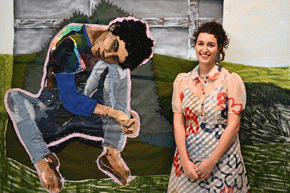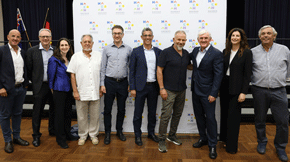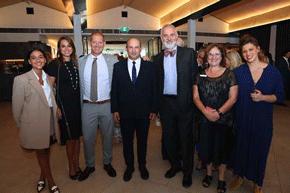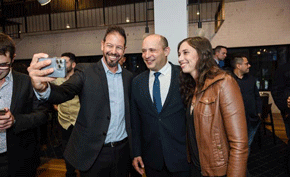Oh No— Not another Haggadah
Every year there seem to more and more haggadahs [the actual plural is haggadot] available. And this ignores the self-printed ones available to those with some computer literacy.

Rabbi Jeffrey Cohen
I started to reflect on this when I received two rather unusual ones in PDF format. The first is from the Jewish Community Centre of Tokyo and the other from a group of young people trying to do something Jewish in Seoul. And yes, in each case there were translations and transliterations in to Japanese and Korean respectively.
Growing up in Sydney, the family Seder was an exercise in chaos. If there were 25 people at the table there were usually 15-20 different versions. Inevitably someone would cry out “what page are we on?” and the response was a cacophony of page numbers, no two the same.
Perhaps a quarter century ago someone decided we should all have the same one. They went out and purchased the ubiquitous red and yellow one often called the Goldman Haggadah after the editor. It was not great but it did allow some synchronization.
Some 90 years ago the coffee manufacturer, Maxwell House, produced a standardized text and it was available where Kosher for Passover products were sold. Actually, it was produced as a marketing ploy so kosher consumers would believe their coffee was kosher l’pesach! This year they reissued it as an update as “Midge’s Haggadah Passover Service” which is a homage to Amazon Prime’s “Midge’s Haggadah Passover Service”.
Over a quarter of a century, ago the two non-orthodox movements each produced their own which was a mixture of belief and scholarship. The two major orthodox publishers, Art-Scroll and Koren, seem to have so many that it would take from now until Passover next year to properly evaluate them. So many of them have commentaries by a particular scholar although the early Artscroll texts included a pot-pouri of scholarship, ancient and modern.
Two which fall into the above category are the Haggadah with commentary by Jonathan Sacks- his prayer books and machzorim have become common in orthodox synagogues in Australia. The other has a strong connection to Australia which was published this year. The commentary of Eliezer Berkovits, who served Sydney’s Central Synagogue in the 1940s has just been compiled and published by the OU (Orthodox Union).
The OU’s youth arm has published one trying to make the Seder a little more relevant to those between bar/bat mitzvah and university. In addition, there a few haggadot which describe themselves as falling into the “How-To” category. Some would suggest an adaptation of the Dummies and the Idiots Guide series of books.
This brings me to the 21stcentury text- if that is what one calls it. It is the Emoji Hagaddah. The whole text is written as if it were messages on your smartphone using emojis.
Finally, there are haggadot published for those who want to make the evening a socially conscious event. There is the Human Rights Haggada; the Jewish Veg Vegan Haggadah; the StandWithUs Passover Haggadah. Also, there are many which can be downloaded from the internet including one by thJewishsh International rescue group- HIAS which focuses on the plight of the refugees.
In summary, Seder night should not be dull and boring. In reali,ty there is too much out there to choose from. It is almost easier to just throw up our hands and hope that someone else has supplied enough so we can all follow along and have an answer when inevitably someone will ask “What page are we on?” and the answer will be unanimous.
Rabbi Jeffrey Cohen is Associate Professor in the School of Medicine (Sydney Campus) University of Notre Dame Australia. Previously he was CEO of the Sydney Jewish Museu










